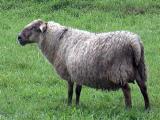
|
Saeftinger SheepThe Saeftinger breed originated around 1986 by crossing a Romanov ram onto Suffolk ewes. The breed takes its name from the salt meadows where it grazes. |

|
Santa Cruz SheepThere is considerable uncertainty as to the exact origin of the sheep of Santa Cruz Island, even to the century in which sheep were placed there. Speculation is that Merino, Rambouillet, and perhaps some Churro figure in the Santa Cruz sheep's background, and it is certain that the sheep have been feral for the last 70 years. The Nature Conservancy acquired 88% of the island (located off the coast of southern California) during the 1970's and began an eradication program in 1980. |
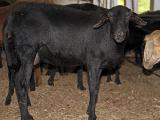
|
Santa Inês SheepThe Santa Inês is a breed of hair sheep found in Brazil. It is generally thought to be a cross of Morada Nova, the course-wooled Italian breed, Bergamasca, and the native coarse-wooled Crioula, followed by a period of selection or evolution for absence of fleece. Colors range from red, black and white and can be spotted or solid. They have large bodies, are long-legged and have large pendulous ears and are polled. |

|
Sardinian SheepThe Sardinian breed originated from the local lowland breed which were large, polled, and had white wool. Merino and Barbary breeding were also used in developing the breed. The males are occasionally horned and the females are polled (hornless). |

|
Scotch Mule SheepThe Scotch Mule is an intentionally produced crossbred sheep out of Scottish Blackface ewes and sired by Bluefaced Leicester rams. The term "mule" (when it refers to sheep) is used for an intentionally produced crossbred sheep that is sired by a Bluefaced Leicester ram. In the United Kingdom, Mule ewes are the backbone of the commercial sheep industry. The various types of Mules are the most popular commercial ewes in the UK, and the Bluefaced Leicester is the number one crossing sire there. |
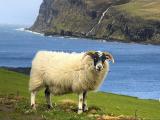
|
Scottish Blackface SheepThe Scottish Blackface is by far the most important blackface sheep in all of Great Britain. They are primarily used for crossing, usually with the Border or Bluefaced Leicester. They originated as a mountain sheep in Scotland, and there is a tradition that they came from a Spanish ship wrecked during the northward flight of Armada in 1588. The Scottish Blackface has a light weight fleece of long, coarse wool. Both sexes have horns. |
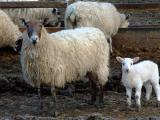
|
Scottish Greyface SheepBy using the Border Leicester ram with the Scottish Blackface ewe, the Scottish Greyface is produced. |

|
Shetland SheepThe Shetland's roots go back over a thousand years, probably to sheep brought to the Shetland Islands by Viking settlers. They belong to the Northern European short-tailed group of sheep, which also includes Finn sheep, Icelandic sheep, and Romanovs. The Shetland is a primitive, unimproved breed noted for its natural hardiness, lambing ease, longevity, and ability to survive under harsh conditions. It is one of the smallest breeds of sheep. |
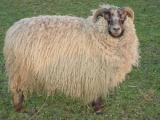
|
Shetland-Cheviot SheepFrom the turn of the 20th century, North Country Cheviot rams have been bred with the Shetland ewe to produce what has become locally as the Shetland-Cheviot. The hybrid vigor prdouced from the crossing the two pure breeds ensures that the Shetland-Cheviot retains the features of both. She is a hardy, thrifty, and milky with her sire's excellent conformation. |
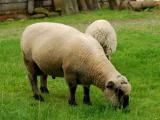
|
Shropshire SheepShropshires are a good, middle-of-the-road sheep, medium to large in size, with dark faces and wool on the legs. They originated in central western England in the counties of Shropshire and Stafford from native stock, Southdown, Leicester, and Cotswold crosses. First imported into the United States in 1855, until the 1930's, the Shropshire was the most popular and influential breed in the country. |
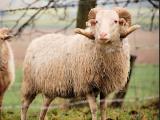
|
Skudde SheepThe Skudde is a nordic, short-tailed heather sheep. Its original homeland was East Prussia and the Baltic States. Today a few small herds can be found in these areas. The most noticeable feature of the Skudde ram is the imposing snail horn. The ewes are hornless or carry horn stumps. In individual cases, it occurs that ewes carry chamois-like “hornlets.” The animals are slender, the weight of the rams lies between 35 and 50 kg (77-110 lbs), that of the ewes from 25 to 40 kg (55-88 lbs). |

|
Soay SheepThe Soay has been called the only living example of the small, primitive sheep which inhabited the British Isles before the coming of the Norsemen and Romans. |

|
Solognote SheepThe Solognote is an old breed that derives its name from Sologne, France, where it was developed in the 15th century. |

|
Somali SheepThe Somali is a hair sheep native to Somali in Africa where they are reared primarily for meat production. |
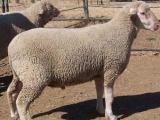
|
South African Meat Merino SheepSAMMs were imported into South Africa by the Department of Agriculture from 1936 to 1974 from Germany where the Deutsche Fliesch Merino is a common meat sheep of Germany, Austria, and Poland. In South Africa, the name was translated as Duits Vleis Merinoand then into English as German Mutton Merino. In 1974, the South African Breed Society changed the name to the South African Mutton Merino. |

|
South Suffolk SheepThe South Suffolk is a fixed cross between the Suffolk and Southdown breeds. It is a large, comparatively heavy meat breed of sheep. |

|
South Wales Mountain SheepSouth Welsh Mountain sheep have been reared on the harsh hill pastures of South Wales for centuries. Their ability to thrive where lesser breeds have failed has ensured their predominance in the area. They are a dual purpose breed. They are similar in appearance to other Welsh Mountain breeds, and rams are frequently used to improve the size and conformation of the other Welsh Mountain breeds. |

|
Southdown SheepThe Southdown takes its name from the Chalk Hills of Sussex County in extreme southeastern England where they are said to have roamed from time immemorial. They are one of the oldest sheep breeds, having contributed to the foundation stock of all other down breeds: Suffolk, Hampshire, and Oxford. |

|
Spael SheepThe Norwegian Spael sheep is named after the short, nearly wool-less tail (spælen). It originates from the old Norwegian landrace of sheep. In 1912, two breeding stations were established to prevent extinction of the breed. Icelandic sheep were crossed onto the Spael sheep through semen import in the 1960's and 1970's. Finnsheep and Faeroe Island sheep were also used in the breeding of Spael sheep. |

|
Spanish Merino SheepA number of sheep breeding nations, including Phoenicia, Italy, and Spain, are believed to have played a part in the development of the Merino sheep. However, it is generally agreed upon that the Moors, who dominated Spain through the eighth to thirteenth centuries, were primarily responsible for selectively breeding the animals to such an extent that the wool they produced became superior to that of all other sheep. |
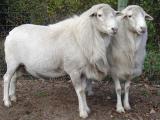
|
St. Croix SheepThe St. Croix is a hair sheep that originated in the Virgin Islands, where it is called the "Virgin Island White." The breed is believed to have descended from the hair sheep of West Africa, but some feel it is a cross of the Wiltshire Horn and the native Criollo. Most of these sheep are white with some solid tan, brown, black or white with brown or black spots. |

|
Steinschaf SheepThe Steinschaf is a direct descendent of the now extinct Zaupelschaf. It had developed characteristics that made it perfect for life in the high mountains in the Eastern Alpine regions. In the beginning of the 20th century the Steinschaf still roamed the meadows of Bavaria, Germany, especially the areas around Berchtesgaden, Traunstein, and Rosenheim. In Austria, its range was mainly in the Salzburg area |

|
Suffolk SheepSuffolks are found throughout the world's sheep producing countries. In the United States, they are by far the most popular pure breed of sheep, accounting for more than fifty percent of purebred sheep registrations. In the British Isles, they are the leading terminal sire breed. The Suffolk breed originated almost 200 years ago on the rugged southeastern coast of England, the result of crossing Southdown rams and Norfolk Horn ewes. Originally, they were called Southdown Norfolks or just "Black faces." |

|
Swaledale SheepThe breed's origin almost cerainly emerged from the genetic group of horned sheep from which also came the Blackface, the Rough Fell, and other localized types. |

|
Swifter SheepThe Swifter is a new, highly productive sheep breed, which was developed in the 1970's by the Agricultural University in Wageningen, the Netherlands, to increase the productivity of the Dutch sheep stock. Swifters are used as dams for slaughter lambs. |
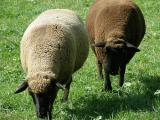
|
Swiss Black-Brown Mountain SheepThe Swiss Black-Brown Mountain originates from the ancient Swiss breeds Jura, Simmentaler, Saanen, Frutiger, Roux de Bagnes and Freiburger. It is a polled, medium-sized sheep, deep, and broad. The coat color is either black, chestnut colored, or light brown. Head and legs are clear of wool, covered with short black or brown hairs. The fleece of the Swiss Black-Brown Mountain is of single-color, thick, and close-cropped. |

|
Swiss White Alpine SheepThe Swiss White Alpine is a short-wooled breed kept primarily for meat. The breed originated in Switzerland in 1936 from a cross between the Swiss White Mountain and 50 to 75% Ile-de-France. |